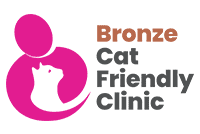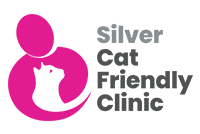There are two types of Salmonella bacteria which commonly affect cattle in the UK, these being Salmonella Dublin and Salmonella Typhimurium. In recent years, S. Dublin has become the most common while the incidence of S. Typhimurium has declined since the late 90s. However, the true prevalence is unknown because the majority of Salmonella is found in animals with clinical disease and there is a lack of routine monitoring.
Salmonella is especially important as it is a zoonotic disease (can infect humans), usually picked up by any contact with infected faeces, unpasteurised milk, contaminated clothing or farm pets.
Spread
- The highest risk of introducing disease to a herd is via a bought in livestock.
- Vermin, cats, birds and clothing/boots.
- It can lie in contaminated surface water and survive on pasture for weeks after muck spreading.
- Salmonella can persist in buildings for many months and cleaning with high pressure hoses can actually spread infection around a shed by aerosol effect.
Clinical signs
Calves
- can experience a sudden septicaemia if they had not received adequate colostrum
- dullness and poor appetite with a grey pasty/ watery foul smelling faeces is often seen. –
- Signs of pneumonia can also be seen.
- S. Dublin infections can sometimes lead to sloughing of the extremities (ears, tail tip, and hooves), joint infections and occasionally infection of neck vertebrae causing weakness of all four legs.
Adults
- Disease is usually seen as abortions at the 5-8 month stage of pregnancy
If you suspect Salmonella, the vet must be called and samples sent for culture to confirm diagnosis. Affected animals must be isolated and aborted calves should also be tested for Salmonella as part of routine disease surveillance.
Treatment
- Response to treatment is usually poor but involves antibiotics, anti-inflammatories and fluids
- If affected cattle manage to recover from the infection, they can remain as carriers and shed bacteria intermittently or continuously for many months or for life. They usually start to shed bacteria after a period of stress such as movement or calving. These animals may even progress to full blown clinical disease or if pregnant may abort or lead to an infected calf.
Control
- Try to source animals from herds with no history of Salmonella
- Any incoming stock should be isolated as usual for 4 weeks, as most Salmonella outbreaks occur 2-3 weeks after arrival
- Adult cattle may be blood tested and/or faeces cultured
- Vermin (including bird) control is essential, especially around feed stores
- It is advisable not to graze pasture within 3 weeks of spreading
- Strict hygiene precautions should be observed at calving
- Calving pens should be disinfected thoroughly between cows
- Any aborted material should be disposed of and the cow isolated and tested when possible
- Avoid feeding milk from aborted cows to any calves
Vaccination
Vaccination can be used as part of a prevention or control plan. ‘Bovivac-S’ covers both S. Dublin and S. Typhimurium. It can be given to animals over 3 weeks of age, two s/c injections 3 weeks apart are required. Ideally it should be done in advance of drying off and definitely within 8 weeks of calving to ensure protection through these high stress risk periods.






